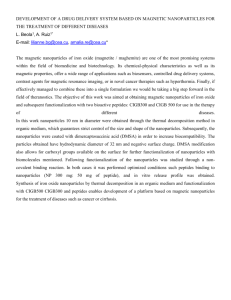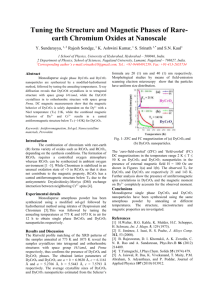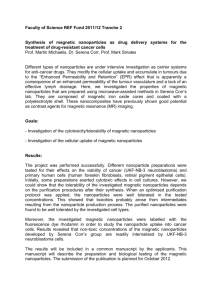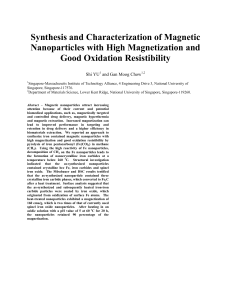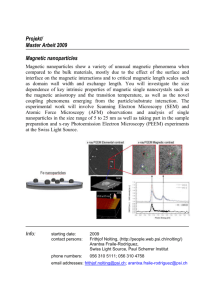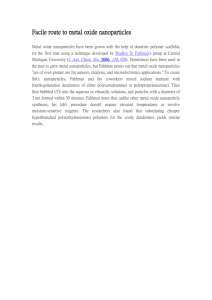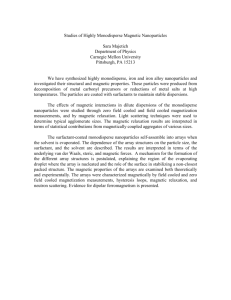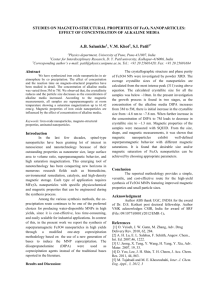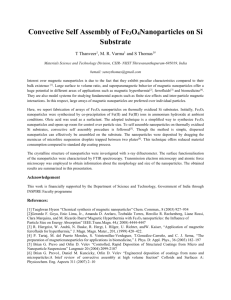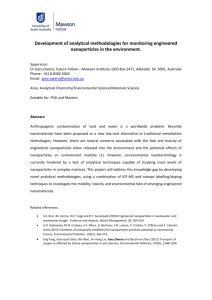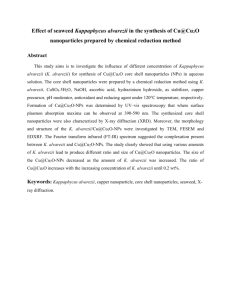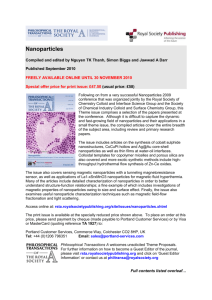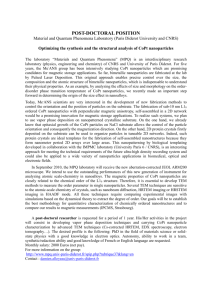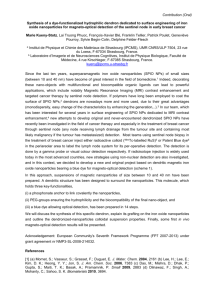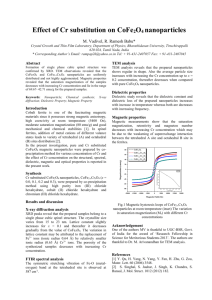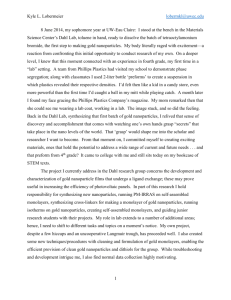Project_Mefford - Core Mobile App Development
advertisement
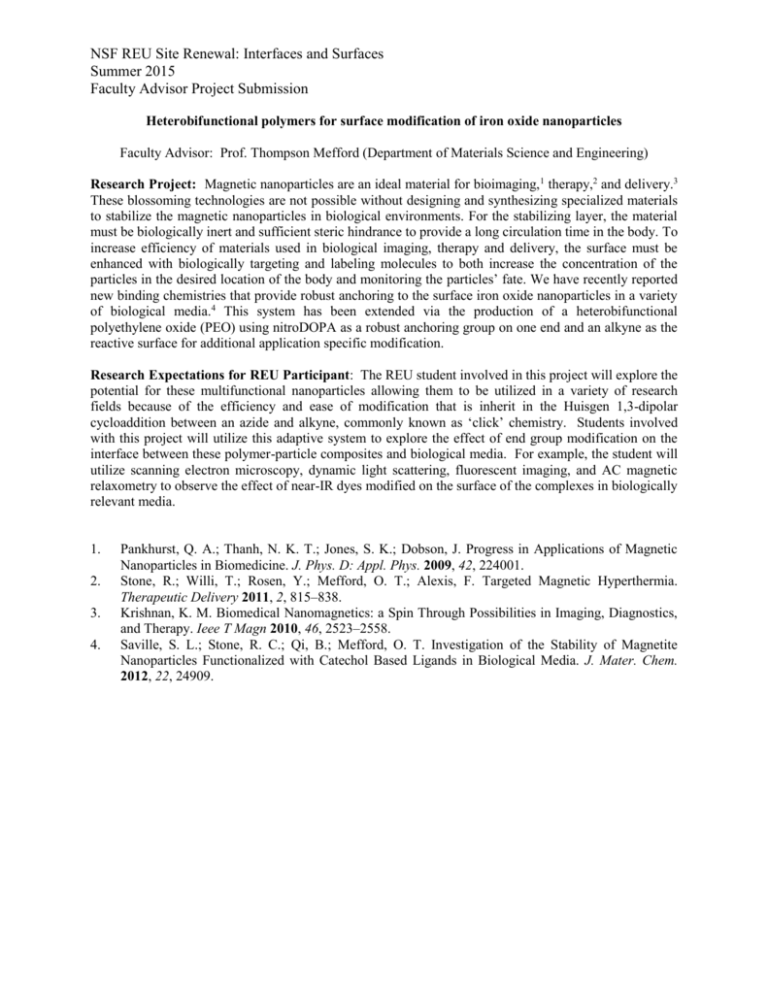
NSF REU Site Renewal: Interfaces and Surfaces Summer 2015 Faculty Advisor Project Submission Heterobifunctional polymers for surface modification of iron oxide nanoparticles Faculty Advisor: Prof. Thompson Mefford (Department of Materials Science and Engineering) Research Project: Magnetic nanoparticles are an ideal material for bioimaging,1 therapy,2 and delivery.3 These blossoming technologies are not possible without designing and synthesizing specialized materials to stabilize the magnetic nanoparticles in biological environments. For the stabilizing layer, the material must be biologically inert and sufficient steric hindrance to provide a long circulation time in the body. To increase efficiency of materials used in biological imaging, therapy and delivery, the surface must be enhanced with biologically targeting and labeling molecules to both increase the concentration of the particles in the desired location of the body and monitoring the particles’ fate. We have recently reported new binding chemistries that provide robust anchoring to the surface iron oxide nanoparticles in a variety of biological media.4 This system has been extended via the production of a heterobifunctional polyethylene oxide (PEO) using nitroDOPA as a robust anchoring group on one end and an alkyne as the reactive surface for additional application specific modification. Research Expectations for REU Participant: The REU student involved in this project will explore the potential for these multifunctional nanoparticles allowing them to be utilized in a variety of research fields because of the efficiency and ease of modification that is inherit in the Huisgen 1,3-dipolar cycloaddition between an azide and alkyne, commonly known as ‘click’ chemistry. Students involved with this project will utilize this adaptive system to explore the effect of end group modification on the interface between these polymer-particle composites and biological media. For example, the student will utilize scanning electron microscopy, dynamic light scattering, fluorescent imaging, and AC magnetic relaxometry to observe the effect of near-IR dyes modified on the surface of the complexes in biologically relevant media. 1. 2. 3. 4. Pankhurst, Q. A.; Thanh, N. K. T.; Jones, S. K.; Dobson, J. Progress in Applications of Magnetic Nanoparticles in Biomedicine. J. Phys. D: Appl. Phys. 2009, 42, 224001. Stone, R.; Willi, T.; Rosen, Y.; Mefford, O. T.; Alexis, F. Targeted Magnetic Hyperthermia. Therapeutic Delivery 2011, 2, 815–838. Krishnan, K. M. Biomedical Nanomagnetics: a Spin Through Possibilities in Imaging, Diagnostics, and Therapy. Ieee T Magn 2010, 46, 2523–2558. Saville, S. L.; Stone, R. C.; Qi, B.; Mefford, O. T. Investigation of the Stability of Magnetite Nanoparticles Functionalized with Catechol Based Ligands in Biological Media. J. Mater. Chem. 2012, 22, 24909.


